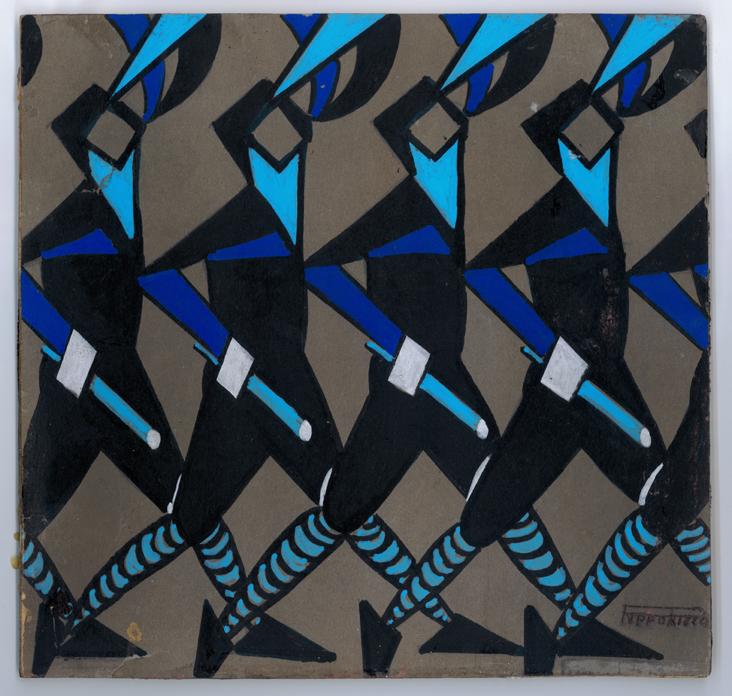Through the 1st of June 2012, New York University’s Casa Italiana Zerilli-Marimo in New York City will display rarely-seen works of art by prominent Italian futurist artists in the exhibit “Italian Futurists: Concepts and Imaginings”.
Thirty-eight works in various media explore both the first and second wave of futurism, a cultural movement initiated by Filippo Tommaso Marinetti in 1909. Futurism’s first period analysed and explored the colour and line dynamics of colour. The exhibit’s pieces from Giacomo Balla of colourful waves creating movement and four paintings by Alberto Bragaglia, who founded the House of Bragaglia in Rome, an important place for futurists to meet and show their art, researching colour and anatomical movement are characteristic of this period.
The second phase, also called synthetic futurism, incorporated elements of cubism, mechanical and industrial subjects, and young, muscular figures. Giulio D’Anna’s “Il Nuotatore” (The Swimmer) and Pippo Rizzo’s “Squadrismo” (named for a sub-movement of futurism)—the cover image for the show’s catalogue, depicting dark-shirted soldier-like figures in movement—from this period are part of the exhibit, which also features Gerardo Dottori’s “aeropainting”, a style that took its name from the airplane-like view of subjects from above distorted by the effects of speed.
As Stefano Acunto, chairman of the Italian Academy Foundation and owner of the works on display, said at the opening, the futurists “wanted to express violence to a world that was accustomed to passive art. Art as it was was an expression of stagnant moments in time.”
Mr. and Mrs. Acunto have assembled the works that comprise “Italian Futurists: Concepts and Imaginings” over 35 years, incorporating pieces acquired in Italy and brought to the U.S. into an inherited collection. The exhibition is open to the public free of charge on weekdays during the centre’s regular hours.













